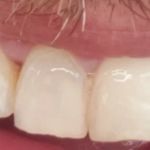How to Fix Gaps Between Teeth: A Comprehensive Guide to Closing Those Smile Gaps
Gaps between teeth, often referred to as diastema, can affect the appearance of your smile and cause discomfort or difficulty in maintaining oral hygiene. While some people may embrace their natural smile, others may want to explore options to fix the gaps between their teeth. The good news is that there are various solutions available to close these spaces and enhance your smile. Whether you're dealing with a small gap between your front teeth or larger spaces, there are treatments designed to meet your needs.
In this article, we’ll explore different approaches to fixing gaps between teeth, including dental procedures, lifestyle tips, and home remedies. We’ll also discuss the factors that contribute to the formation of gaps, helping you make an informed decision about how to address your dental concerns. Whether you're looking for a permanent solution or a temporary fix, this guide provides everything you need to know to restore your smile.
- 1. Dental Bonding: A Quick and Affordable Solution
- 2. Braces and Clear Aligners: Long-Term Solutions
- 3. Veneers: A Cosmetic Approach to Closing Gaps
- 4. Contouring and Shaping: A Subtle Adjustment
- 5. The Role of Good Oral Hygiene in Gap Prevention
- 6. Maintaining Your Smile After Treatment
1. Dental Bonding: A Quick and Affordable Solution
Dental bonding is one of the most common and least invasive methods for fixing gaps between teeth. In this procedure, a tooth-colored resin is applied to the teeth and shaped to close the gaps. The resin is then hardened with a special light, making it a fast and effective solution for minor gaps. The procedure typically takes less than an hour, and you can see immediate results.
While dental bonding is a relatively inexpensive option, it's not a permanent solution. The bonding material can wear down over time, especially if you grind your teeth or consume stain-causing foods and beverages. Nevertheless, for those looking for a quick, non-invasive way to fix gaps between teeth, bonding is an excellent choice.
One of the key advantages of dental bonding is its minimal preparation time. In most cases, there’s no need for anesthesia, and the procedure can be completed in a single visit. However, bonding may not be suitable for individuals with larger gaps or significant alignment issues.
2. Braces and Clear Aligners: Long-Term Solutions
If you're dealing with more significant gaps between your teeth or misalignment, braces or clear aligners may be the ideal solution. Both options work by gradually shifting the position of your teeth to close the gaps over time. Braces are typically used for more severe cases, while clear aligners, such as Invisalign, are a more discreet and comfortable alternative.
Braces involve the use of metal brackets and wires to apply constant pressure to the teeth, gradually moving them into the desired position. While the process can take anywhere from several months to a few years, the results are long-lasting. Clear aligners, on the other hand, are custom-made trays that are worn over your teeth and adjusted periodically to achieve the same effect.
Both braces and clear aligners offer a permanent solution to gaps, but the treatment time can be lengthy. The advantage of these methods is that they not only close gaps but also correct any misalignment, improving overall dental function and appearance.
3. Veneers: A Cosmetic Approach to Closing Gaps
If you're looking for a cosmetic solution to close gaps between teeth without extensive dental procedures, veneers are an excellent option. Veneers are thin, custom-made shells that cover the front surface of your teeth. They are bonded to the teeth to enhance their appearance, including closing gaps and improving the overall symmetry of your smile.
Veneers are an ideal option for those who want a quick solution without the hassle of traditional braces. They can also help correct other imperfections, such as discoloration, chipped teeth, or slight misalignment. However, veneers are not reversible, and a small portion of your tooth enamel will need to be removed to accommodate the veneer. It’s essential to consult with a dentist to ensure that this treatment is the right choice for you.
Although veneers provide an instant and aesthetically pleasing solution, they can be costly. Additionally, they may need to be replaced after a decade or so, depending on how well they are maintained.
4. Contouring and Shaping: A Subtle Adjustment
Dental contouring and shaping is a less invasive procedure that can help fix gaps by reshaping the teeth. This method involves the removal of small amounts of enamel to adjust the size, shape, and contour of the teeth. It’s an excellent option for closing small gaps or enhancing the overall appearance of the teeth without the need for braces or veneers.
Contouring is typically performed in one visit and doesn’t require any anesthesia. It is a simple and effective solution for minor cosmetic changes. However, it’s not suitable for large gaps or significant misalignment. Additionally, because enamel is permanently removed, it’s essential to work with a skilled dentist to ensure that your teeth remain healthy after the procedure.
While dental contouring offers a subtle and relatively affordable fix for small gaps, it’s not a one-size-fits-all solution. It’s crucial to have a thorough consultation with your dentist to determine if this method is appropriate for your specific needs.
5. The Role of Good Oral Hygiene in Gap Prevention
While addressing existing gaps is important, preventing future gaps is equally essential. Maintaining good oral hygiene can prevent gum disease, tooth decay, and other dental issues that may lead to gaps between teeth. Regular brushing, flossing, and visits to the dentist are crucial for maintaining a healthy smile and preventing further spacing problems.
Avoiding habits such as teeth grinding and clenching can also help prevent tooth movement and potential gaps. If you suffer from bruxism (teeth grinding), your dentist may recommend a mouthguard to protect your teeth at night.
In addition to practicing good oral hygiene, ensuring that your teeth are properly aligned and that you’re not experiencing any jaw-related issues will also help maintain the natural spacing of your teeth over time.
6. Maintaining Your Smile After Treatment
After fixing gaps between your teeth, it’s essential to follow a few simple steps to maintain your new smile. This includes regular dental check-ups, good hygiene habits, and possibly wearing a retainer or follow-up treatment to ensure that your teeth stay in place.
If you’ve opted for veneers or dental bonding, make sure to avoid hard foods that could damage or dislodge the material. Wearing a retainer after orthodontic treatment will help ensure that your teeth don’t shift back over time. Maintaining your smile after treatment is as important as the treatment itself to ensure long-term results.
By following your dentist’s advice and maintaining good oral hygiene, you can enjoy the benefits of a beautiful, gap-free smile for years to come.
If you're considering treatment for gaps between your teeth, it’s essential to choose the right solution based on your needs and preferences. Whether you opt for dental bonding, braces, veneers, or contouring, there’s a method that can help you achieve the smile you’ve always wanted. To learn more about the best treatment options for your smile, visit Dentistry Toothtruth today.







 Schooley Dental0.0 (0 review)
Schooley Dental0.0 (0 review) Maui Whitening Orlando4.0 (32 review)
Maui Whitening Orlando4.0 (32 review) Dr. Jack Sabol3.0 (3 review)
Dr. Jack Sabol3.0 (3 review) Puntillo and Crane Orthodontics4.0 (339 review)
Puntillo and Crane Orthodontics4.0 (339 review) Destination Dental Care4.0 (102 review)
Destination Dental Care4.0 (102 review) Toothbeary Pediatric Dentistry4.0 (101 review)
Toothbeary Pediatric Dentistry4.0 (101 review) The Importance of Oral Health Education During Pregnancy for a Healthy Pregnancy
The Importance of Oral Health Education During Pregnancy for a Healthy Pregnancy Best Tips for Brushing Your Teeth Properly for Healthy Gums: Essential Techniques for Oral Health
Best Tips for Brushing Your Teeth Properly for Healthy Gums: Essential Techniques for Oral Health Why Skipping Dental Checkups Can Lead to Bigger Oral Health Problems
Why Skipping Dental Checkups Can Lead to Bigger Oral Health Problems Advantages of Porcelain Dental Restorations
Advantages of Porcelain Dental Restorations How Can Diabetes Cause Tooth and Gum Problems? Preventing and Managing Oral Health Issues
How Can Diabetes Cause Tooth and Gum Problems? Preventing and Managing Oral Health Issues Healthy Habits for Promoting Good Oral Health and Hygiene: Tips for a Healthy Smile
Healthy Habits for Promoting Good Oral Health and Hygiene: Tips for a Healthy Smile